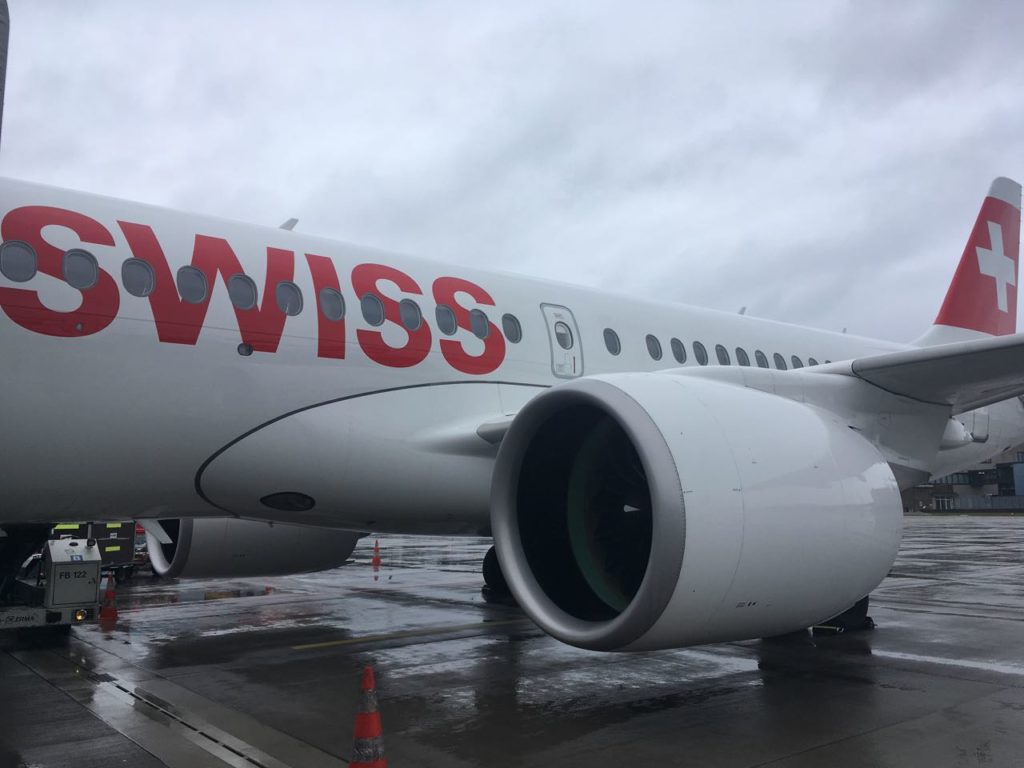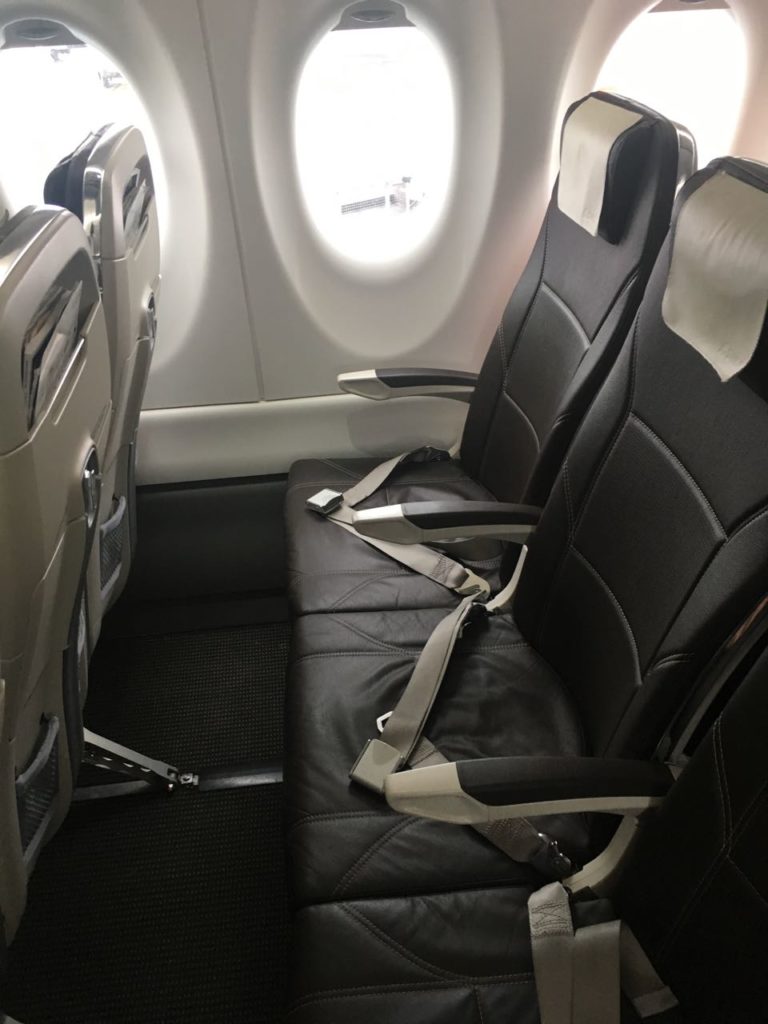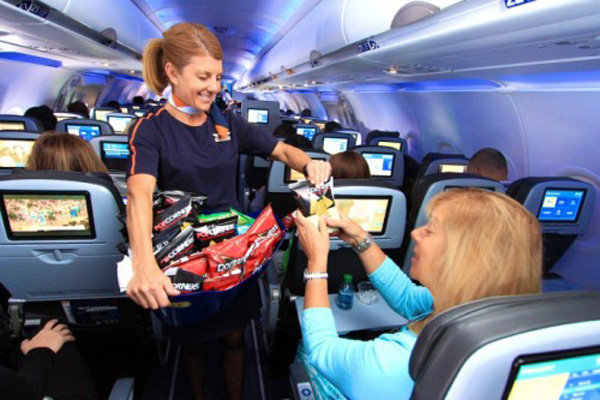The founder of JetBlue Airways is courting investors to start an airline, called Moxy, that could offer what none currently do: direct commercial service between small airports in the U.S.
David Neelman, who successfully launched contrarian JetBlue in 2001, is soliciting investment for Moxy and has placed 60 orders for next generation Bombardier C Series 300 jets, according to an article published in Airline Weekly. This is not a modest play. If all the orders are filled, Moxy would become the second largest U.S. operator of the jet; Delta Air Lines has 75 orders for the smaller C Series 100 variant.

The C Series is a smaller airplane, just shy of the Boeing 737 family of jets, but offers fuel economy and passenger comfort features similar to next generation long-haul aircraft like the Boeing 787 Dreamliner and Airbus A350 series. Image by John Harper, Point Me To The Plane
The new jets are efficient enough to provide cheap commercial service to airports that have, until recently, been relegated to regional jet connector flights. The new airline will be designed to uniquely take advantage of the new airplane’s capabilities, the magazine reported, operating long-distance routes between secondary airports like Hollywood Burbank Airport (BUR), in Southern California and Providence T.F. Green Airport (PVD), in Rhode Island. The CS300 variant that Moxy has reportedly ordered can seat up to 160 passengers in an economy-only configuration.

The CS100’s windows are of similar size to the Airbus A350 and Boeing 787. This made for a very bright cabin, and great plane spotting! Image by John Harper, Point Me To The Plane
Depending on how Neelman outfits his new fleet, passengers could be in for upgraded confines. The C Series is designed with many of the passenger comfort features lauded on long-haul airliners like the Boeing 787 Dreamliner and Airbus A350. The composit airframe supports a lower cabin altitude than standard jets, meaning the air is denser and easier to breathe. The jet is also designed to accommodate exceptionally wide seats in a 2-3 configuration, limiting the number of middle seats.
Moxy looks poised to take a page out of Southwest Airlines’ playbook — which has long focused on point-to-point direct flights between alternate airports — but with the advantage of a more efficient jet that can both land on shorter runways, and fly nonstop coast-to-coast. Southwest operates some transcontintental service using various Boeing 737 models, but those airplanes require longer takeoff distances than a C Series when fully loaded, and aren’t as cost efficient on a per-passenger basis.
Neelman worked at Southwest for five months after it acquired Morris Air, which he led.
Neelman has a reputation for successfully disrupting the airline industry in unique ways. JetBlue grew into a commercial success despite its auspicious launch in one of the worst financial periods in the history of American air travel. The airline focused on economy customers that Neelman thought legacy airlines had left behind. The airline flew brand new airplanes with fully decked-out economy cabins on major routes, forgoing the complicated fare and cabin structures common on the major carriers to provide a more egalitarian experience.

Neelman’s former brainchild, JetBlue Airways, offers economy passengers an experience unsurpassed on major airlines. Image by JetBlue.
Since his 2008 JetBlue exit, Neelman built and chaired Brazil’s Azul Airways, which applied JetBlue’s customer centric model to the South American market.
While JetBlue ran right up the middle against major competitors out of its New York Kennedy (JFK) hub, Moxy appears poised to take an outside route. If Airline Weekly’s assessment is accurate, Neelman is betting that passengers in suburban areas, like the San Fernando Valley, will forgo a slog to crowded Los Angeles International Airport (LAX) in exchange for a service on a brand new CS 300 between smaller, less stressful airports.
If given the choice, would you fly a Moxy C Series plane out of a smaller airport over a legacy carrier’s transcon offering?
The responses below are not provided or commissioned by the bank advertiser. Responses have not been reviewed, approved or otherwise endorsed by the bank advertiser. It is not the bank advertiser's responsibility to ensure all posts and/or questions are answered.
2 comments
The sounds similar to what ExpressJet tried to do when they offered direct service between mid-sized cities that otherwise only had connecting flights via hubs.
I used their Austin—Albuquerque service, but I remember that other airlines put quite a bit of pricing pressure on them to protect their hubs.
I applaud the creative thinking and I hope that the stars all line up for this!
More competition from start-ups like this is a good thing for us. The crews will generally be friendlier, the planes newer and nicer, and the pricing will be better. Total win for travelers. I can’t wait!